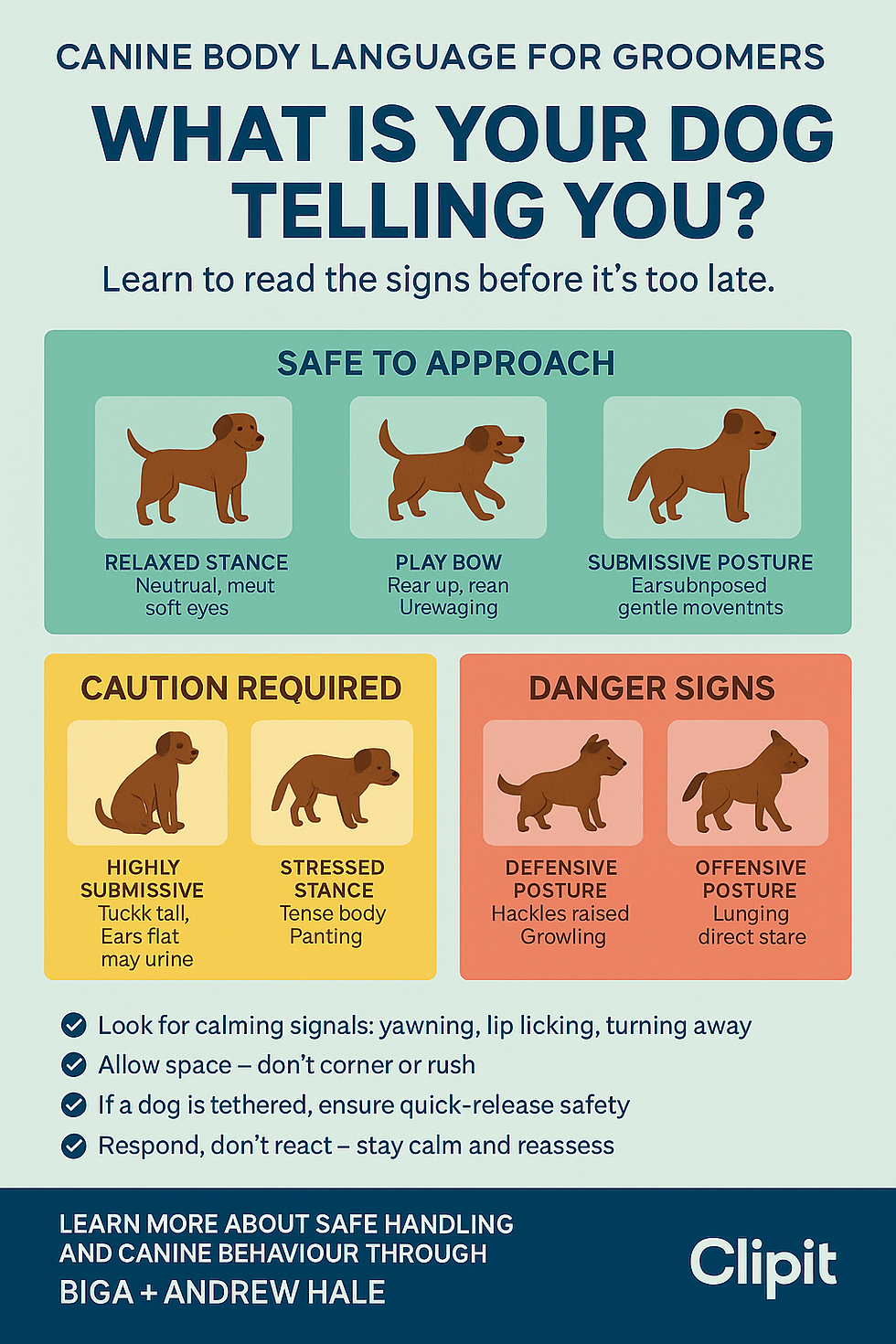Understanding Canine Communication
- Jul 2
- 2 min read
Why Behaviour Education Matters in Grooming
From Clipit Grooming in partnership with the British Isles Grooming Association (BIGA)
At Clipit, we know dog groomers do what they do because they genuinely care. We’re passionate about pets—about their comfort, their safety, and their wellbeing. But in every salon, one truth rings clear: every dog is different.

No two dogs are the same when it comes to understanding canine communication. They may share a breed or haircut style, but each has a unique emotional makeup. Some dogs come from homes with clear boundaries and training—they settle quickly in the grooming environment. Others arrive unsure, stressed, or reactive.
As groomers, you encounter the full spectrum:
Dogs that are calm and cooperative
Dogs that are excitable or nervous
Dogs that may pose a handling risk if not read correctly
That’s why understanding canine communication is essential. You don’t need to be a behaviourist, but you do need to recognise the signs. Most importantly, you need to be proactive, not reactive.
Why Understanding Canine Communication
The British Isles Grooming Association (BIGA) is working closely with respected Animal Behaviourist Andrew Hale who is also a behaviour consultant for Pet Remedy to support groomers in building their knowledge of canine communication. Together, we’re championing the need for greater education around emotional safety and consent-based handling in grooming.
Andrew brings his experience to the grooming sector to help professionals:
Recognise the early signs of stress and discomfort
Interpret canine body language confidently
Avoid trigger stacking and escalation
Apply safe, respectful, and humane handling techniques

BIGA and Clipit believe education is the foundation of safer, kinder grooming practices—and this knowledge protects both the groomer and the dog.
“I firmly believe that 98% of all dog bites are preventable inthe grooming salon.” — Andrew Hale
What Every Groomer Should Know
Dogs speak with their bodies—not words. As professionals, it’s our job to listen.
You may see:
✅ Safe & Approachable Postures
Relaxed stance
Play bow
Submissive posture
These dogs are usually easy to groom and respond well to clear, calm commands. Confident, upbeat handling works best here.
⚠️ Use Caution Postures
Highly submissive posture
Stressed or tense body
Alert or on-edge stance
Defensive or offensive posture
These dogs may be at the edge of their emotional threshold. Knowing how to read these signs gives you the chance to pause, adapt, and re-approach safely.
The 3 C’s of Professional Grooming
At Clipit, we teach our community to work with the 3 C’s in mind:
Calm
Cool
Collected
These qualities not only keep you grounded—they de-escalate tense situations and build trust with the dog on your table.

Take It Further
Understanding a dog’s behaviour is more than a safety measure—it’s part of becoming an exceptional groomer.
As a proud supporter of BIGA, we encourage every groomer to take advantage of their educational resources, including exclusive webinars with Andrew Hale. By investing in your understanding of canine behaviour, you’re investing in safer, more ethical grooming.
👉 Learn more and join the movement for better grooming standards at www.mybiga.org









Comments